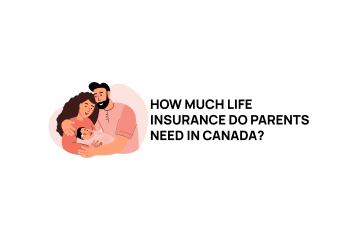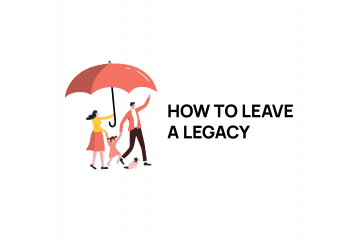Are you a single parent looking for life insurance? Here’s what you need to know about life insurance.
The operative words here are ‘single parent’. If we assume that one parent is primarily or completely responsible for the well-being of children, then this allows us to determine both the amount and type of life insurance.
How much life insurance for a single parent
Single parents acting as the primary financial resource for children are basically acting as the ‘paycheque’ for their children. If the parent passes away, we need a new paycheque to look after the children, until they are through school and no longer financial dependents. This gives us the two things we need to calculate how much life insurance you should have – an amount/income, and a timeframe. Armed with those two numbers you can use our life insurance calculator to get estimates on how much life insurance you may consider purchasing (scroll to the bottom of the linked page to see the calculator).
When using the calculator in the link above, you may assume a percentage of your income that’s less than 100%. These assumptions will need to be determined by you on an individual basis as they are highly personalized to your situation.
For example, you may decide that should you pass away that your children will be primarily supported by their remaining parent. In that case you may assume they’ll need a much lower percentage of your income each year in order to maintain their standard of living. Alternatively you may decide that should you pass away there will be little alternative financial assistance for the children. In that case you should consider towards 100% of your income as replacement, and perhaps a number that’s even higher than the calculator indicates.
Types of life insurance for a single parent
In our experience with single parents there’s one thing we find in common – because the financial resources of single parents are normally stretched to the maximum we must keep the life insurance premiums to the absolute minimum.
The best way to get the highest amount of life insurance at the lowest premium is through term life insurance. Term life insurance has premiums that are initially the lowest possible, but increase over time (i.e. In 10 years or 20 years time). The trade off is ‘cheaper now’, in exchange for ‘more expensive later’.
We also commonly find with single parents a desire to create an estate, or to leave behind a lump sum of money to their children no matter how old you are when you pass away. This request seems heightened with single parents, perhaps due to an increased awareness or perception of financial obligations to their children. Permanent life insurance (such as whole life insurance or term to 100) would typically be used for a long term policy like this that’s intended to be kept forever.
We can mix both types of life insurance inside one policy – some permanent and some term life insurance. This provides a layer of lifetime coverage in conjunction with a lower cost layer of term life insurance that increases coverage while the children are younger. You should not choose this option however at the cost of reducing your coverage amount. If premium dollars are an issue, opt for a larger amount of term life insurance instead of a smaller amount of permanent life insurance.

Beneficiary considerations
Beneficiaries for life insurance policies for single mothers again are a highly individualized decision. There are three distinct parties related to beneficiaries and you should consider these three parties individually to decide what’s best.
First, there’s the guardian of your children. This is the person who would be looking after your children upon your passing. This is not necessarily the same person who has control of the life insurance proceeds, and is a decision you’ll need to make – do you want the guardian of your children to have control or ownership of the funds? Or do you specifically want the guardian to NOT have control or ownership of the funds.
Second, is the beneficiary. This is the person or people who are paid by the life insurance company. While this same person who would normally as an adult also have control of the funds (it’s their money after all), in the case of children the life insurance company can’t simply hand over your insurance proceeds.
Instead, a third party for children who are beneficiaries is the trustee. This is the person who is responsible for the funds until the children are adults. You may make this person the same person as the guardian. This would mean that the person looking after your children has direct access in determining how best to spend the life insurance proceeds to benefit your children. Conversely, you may name someone other than the guardian as the trustee for the funds.
For example, you may have the children’s surviving spouse as the guardian of your children. You could name the children as beneficiaries and the surviving spouse as trustee. That makes the money the children’s but controlled by their surviving parent. Alternatively you could name the children as beneficiary but another family member as trustee. This means the children would be with the surviving parent, but any money requests are not controlled by them and instead must go through your other family member.
Questions? Feel welcome to contact us or book a call with one of our life insurance specialists. We are happy to offer you free information and advice.




